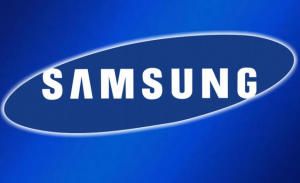SWOT and PEST analysis of Samsung
Samsung is an international electronic company with its headquarters in South Korea. The current CEO of Samsung is Kwon Oh Hyun. By 2012 Samsung group had 221,726 employees. The two main competitors of Samsung are Nokia and Apple.

Founded: 1969
2013 Fortune 500 Rank: 14
Forbes magazine brand listing: 9
Current CEO: Oh-Hyun Kwon
Nation: South Korea
Workforces: 236,000 (2013)
Website: www.samsung.com
SWOT analysis of Samsung
Strength
- Most of Samsung’s hardware’ can easily be integrated with various soft wares
- It has the best innovation and design
- Samsung’s products are environment friendly
- Unlike apple, Samsung’s products are cheap
- Samsung’s brand is recognized globally
Weakness
- Compared to other technology companies, Samsung has low profits margin
- Samsung’s competitors like apple are also its largest buyers of its electronic equipment
- Focuses on producing too many products of different kinds (laptops, television, phones e.tc)
- Samsung does not have its specific OS and software
Opportunities
- Growing demand of smartphones from India
- Increasing mobile advertising industry
- Demand of quality products from Samsung
- Expansion of tablet markets
Threats
- Rapid technological transformation
- Decrease of smartphone prices
Pest Analysis of Samsung
Politics
Samsung has been at times subjected to political action law suit. For instance, it has been subjected to copyright law suit.
Economic
The recession that hit America in 2007 negatively affected the sell of Samsung phones in the US. Fluctuation of the dollar also affects the sells of Samsung phones.
Social
There has been a trend in various places that Samsung produces the best smart phones. Therefore, consumers around the world are influenced by this notion that Samsung produces the best smart phone.
Technology
Samsung is ranked as one of the most innovative companies. The software and applications available in the Samsung phone makes it exclusive.
Innovation in Samsung
Samsung has been known as one of the top innovative companies in the globe. It is ranked among the top 10 technology companies in the globe (Samsung Awarded Top Honors at Mobile World Congress, 2012). About 80 percent of Samsung’s sales are form mobile phone products, but the company makes computers, laptops and televisions among many other electronic accessories.
Reasons for Samsung’s success in innovation can be traced partly to its organization design. The value system at Samsung encourages everyone with a new idea to develop it, move it into the market, and share directly in the new product’s success. If the product fails, Samsung assures job security by moving the developer back top the position held before the new venture began. Some ideas die on there own, but management never shoots down an innovator. Ideas are simply given more time to develop, and the idea’s “champion” is encouraged to “steal” up to an agreed percent of his or her time to devote the project. Divisional incentives for new product development are provided by the expectation that an agreed percent of each product’s division’s profits are to come from products developed in the prior five years.
Samsung is decentralized into more than five divisions, and new ones are created every year. Idea champions from one division often go shopping for support in other divisions if the home base cannot fund an idea’s development. When the product finally finds a home and eventually enters the market, the champion is made a product engineer with rewards to match the promotion. When sells hit more than one million dollar and the idea is considered a full-fledged product, another promotions is bestowed on the champion.
While Samsung encourages decentralization and entrepreneurial spirit, top mangers do not lose control over the innovation process. Information flows to the top through clearly defined reporting relationships. The culture supports the risk taking, so new ideas are not hidden from the top. By rewarding both success and failures, the company encourages innovators to share their ideas rather than keep them to themselves. The experiences of Samsung inform us that innovation does not happen by chance. Like any other organizational process, innovation must be managed.
Types of innovation in Samsung
Developing new products is the most common and most visible type of innovation. Samsung is capable of producing a continuous flow of new products from year to year. Other, less innovative firms try to maintain a stable product line. But this is becoming more difficult because customers increasingly expect change, and they get it from competitors. These external pressures for new products form both customers and competitors; mean that product innovation is increasingly important for organizational success.
The second type of innovation that Samsung uses is the changes to an organization’s structure or processes. Job redesign, new policies and procedures, new controls, reorganizations, and new training programs are examples of administrative innovations in Samsung. Administrative innovations enable organizations to function better by improving internal control, coordination and structure.
Often administrative innovations are mandated, as in the case of affirmative action programs monitored by the equal employment opportunity commission (EEOC). These programs require employers to demonstrate that they do not discriminate against minorities and call for complex administrative practices to satisfy the requirements. Where such activities were not
Stages of innovation process in Samsung
The firs stage of innovation in Samsung is termed as initiation. At this stage, ideas that may help improve a particular product are generated. Initiation is often perceived as wasteful because many ideas are usually tried before the right one becomes obvious. For example, new-product development requires spending money on some ideas that never appear on the market. Competition for scarce budget resources often stimulates conflict between innovative groups like research and development and more practical groups like production. The initiation stage ends with the decision to adopt a particular innovation.
Another stage is the implementation stage which continues until the innovation is accepted as part of the daily routine. Final acceptance of an innovation is often problematic because rarely are all implementation problems anticipated during initiation. Many additional changes are usually required before the innovation can be actually used.
The process of innovation, therefore, is not necessarily a sequential, rational process driven by the goals of organization. Like the previous topics in organization structure that have been considered, innovation proceeds as an emergent process, partially under the control of rational mangers but also affected by external forces and unforeseen events. The management of innovation, therefore, requires an appreciation of these emergent qualities.
Environmental consideration during innovation
The environment impinges on the process of Samsung’s innovation in three ways, first, impending performance problems are usually recognized initially by consumers. If product costs become too high, if quality decrease, or if delivery becomes less timely, consumers may switch immediately to competitors. Successful innovators must actively scan their environments to recognize these potential performance gaps. Failure to be aggressive in recognizing external needs and demands is perhaps the primary limitation on a firm’s effectiveness in in innovation
While most innovative organizations obtain their own slack resources, all depend on ideas and technology drawn from the outside. The most direct sources of knowledge that Samsung uses are consulting firms and other vendors of technology. Samsung frequently contract with these suppliers to buy innovative ideas, programs, services, and products. In other cases, technical information is available at little cost in the form of university and government sponsored research reports. Government development of navigational systems of aircraft, and project planning methods are all instances of “free” technology available for organizational use. The only requirement is being connected closely enough to the environment to use available technical information.
The environment is also a source of financial resources for Samsung. Whereas privately owned firms rely on internal funding to finance innovation, public organizations depend heavily on tax dollars and special grants to subsidize innovation.

Leave a Comment